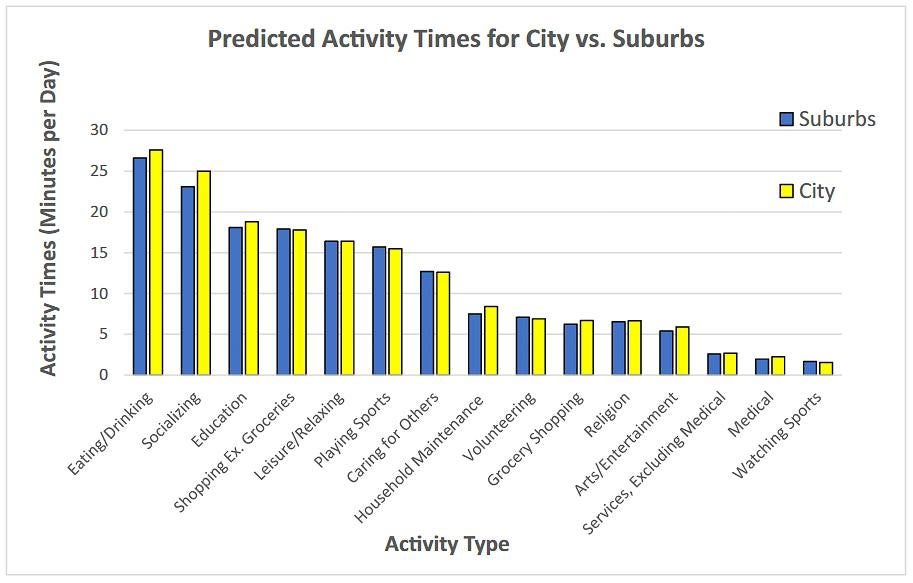A new study from Clemson University Professor Eric A. Morris finds urban and suburban residents spend their time in similar ways for approximately the same amount of time, but suburbanites may have "modestly, but measurably higher subjective well-being" than urbanites.
The researcher used data from the American Time Use Survey, which is conducted by the U.S. Census Bureau and Bureau of Labor Statistics. It surveys about 13,500 Americans per year to get details on how they spent their time the day before being surveyed, and how happy or satisfied they are with their daily lives. Of Morris' data sample, 61% of residents live in suburbs and 39% live in cities, which nearly matches the urban-to-suburban distribution in the 2010 U.S. Census.
Morris analyzed how much time suburbanites and urbanites spent on 18 different activities, and did not find any significant association between location and time allocation for 11 of the 18 activities. For the seven remaining, Morris found urbanites are slightly more likely to leave home, do work or shop for groceries, while suburbanites are more likely to exercise, play sports or do other outdoor activities. The differences in time spent on any given activity, however, are considerably small, according to the data.
"Though there are some significant differences in predicted activity times, these are generally quite small," the report said. "In no case does the proportional difference in any predicted activity time exceed 13% (this is for medical time, a very minor time use), and in no case does the absolute difference exceed three minutes per day (for all out-of-home time). In all, demographically similar city residents and suburbanites are doing very similar things outside of their homes for very similar amounts of time."

Figure provided by Eric A. Morris Clemson University.
The differences in time remained small even when Morris factored in the size of the city (subsets of six cities were taken into account here, including Boston, Chicago and San Francisco) and the annual income of respondents (low-income populations spend their time similarly to other higher-income groups).
The biggest difference between suburbanites and urbanites was the time spent traveling, mainly to and from work. Morris' research found city dwellers devote substantially more time to travel than suburbanites. The six cities mentioned above have residents who spend 15% more, or between nine and 12 minutes a day, on travel.
The second portion of the report touched on the residents' overall quality of life and experiences of feeling happy, sad, in pain, fatigued or stressed, and their sense of meaningfulness. Morris' research found that the slight differences between city dwellers and suburbanites derive from the satisfaction they get from caring for others, leisure and relaxation and exercise, sports and outdoor recreation.
In sum, this paper suggests that suburbanites and urbanites may live far more similar lifestyles than advocates of either geography may believe. Further, it appears that, in the aggregate, the suburbs may offer a modestly but measurably higher quality of life," the report concludes, adding that the return to the cities in the late 2000s may be slowing as more American suburbs are outpacing their urban cores. "In short, suburban living may not be all that bad," Morris writes.

